

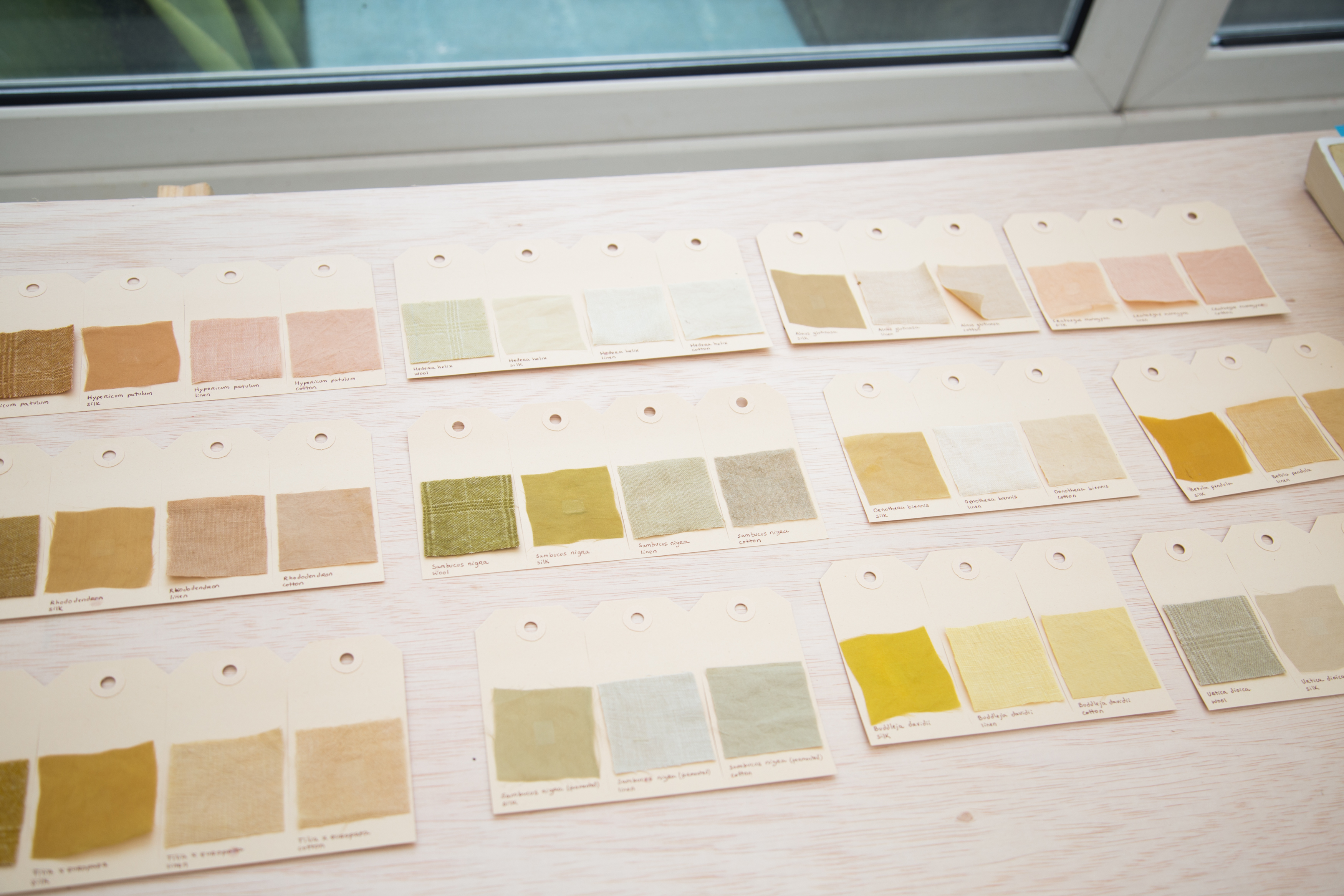
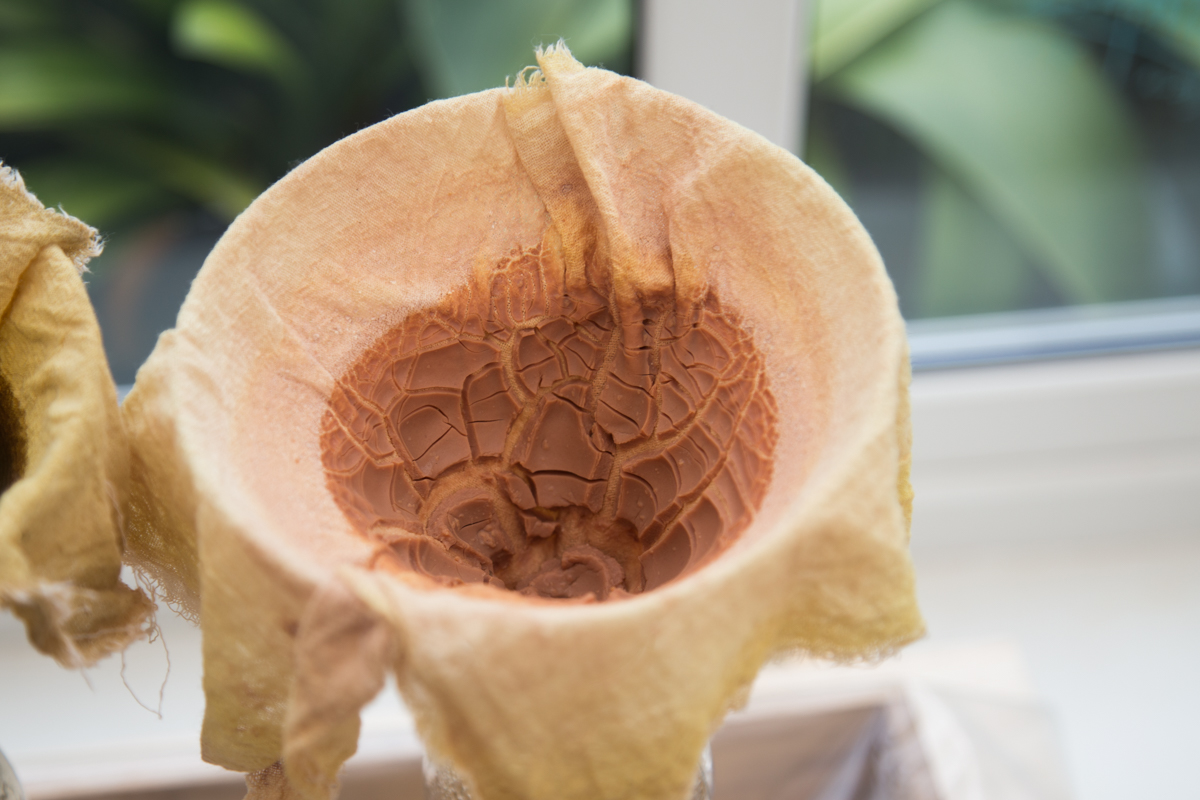
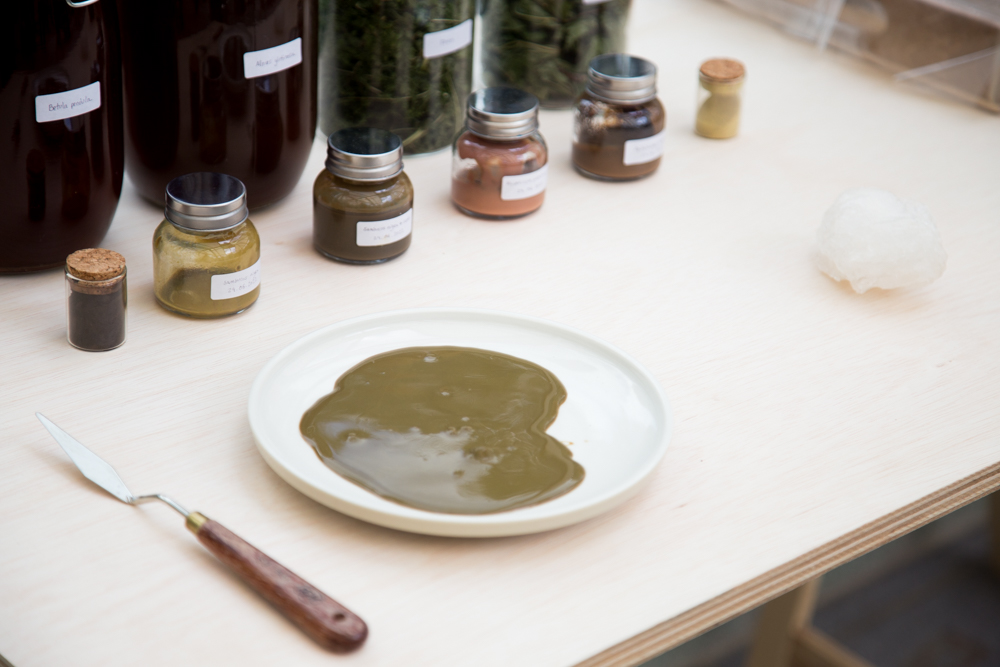
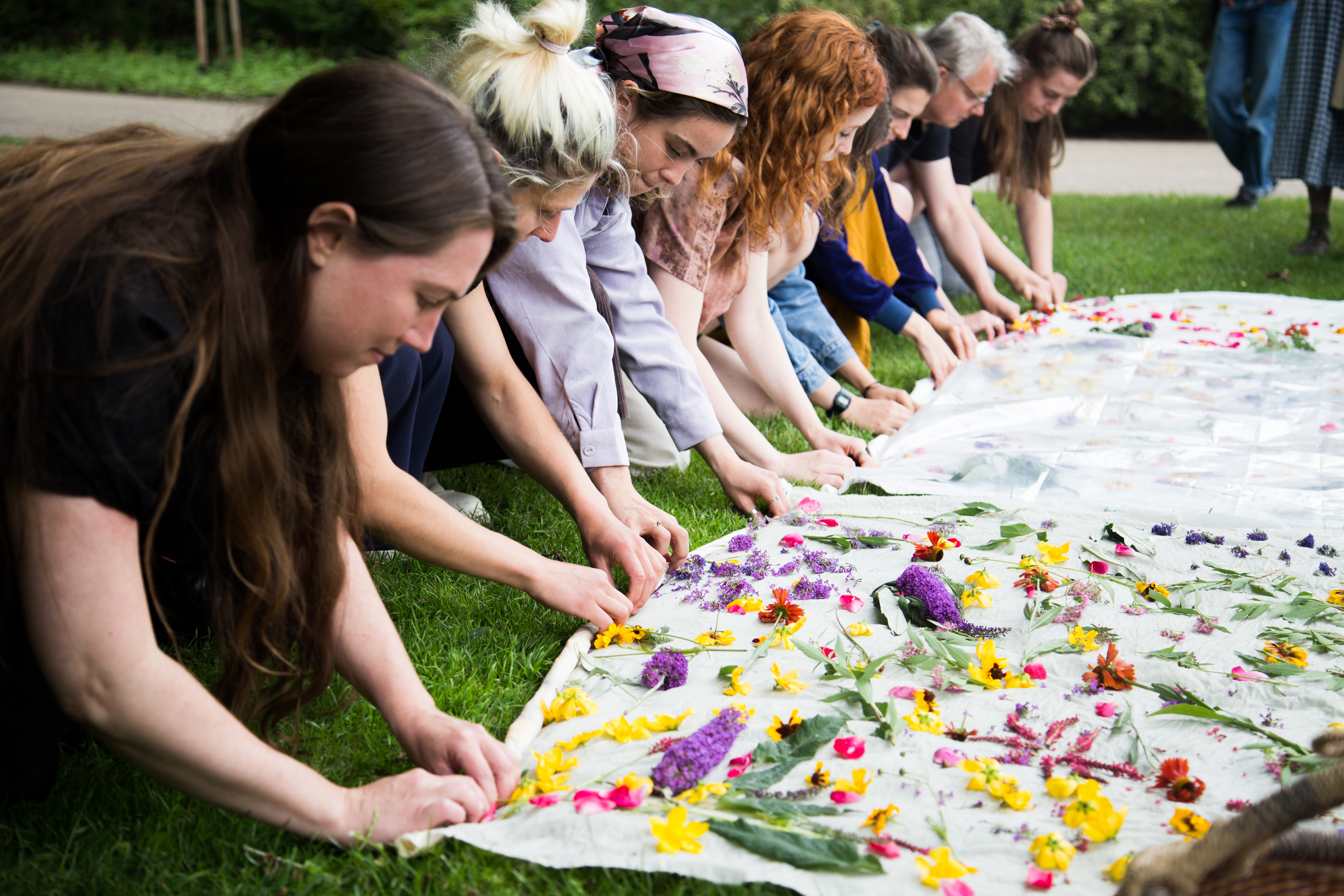

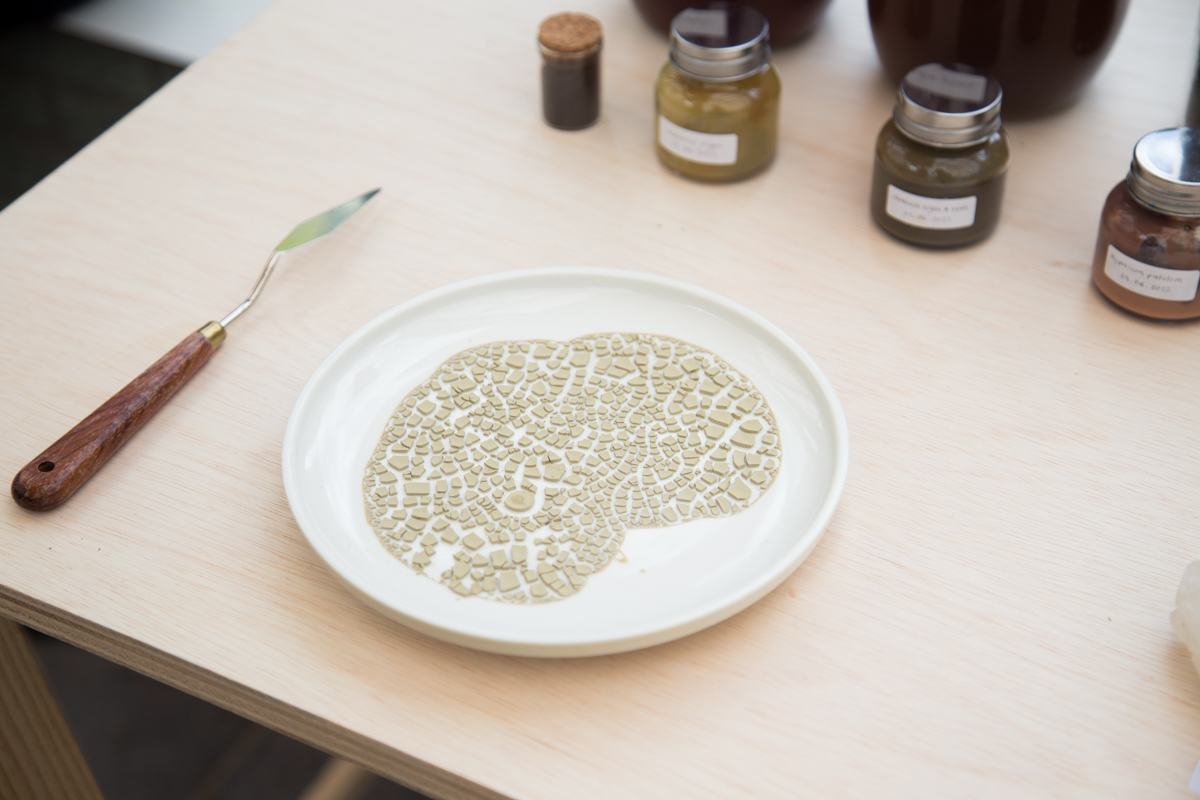




Foraging Rituals, 2022
Table cloth & dinner
Material: cotton, naturally dyed with 13 plant samples from Amstel Park & food made from the same plants
Dimensions: 2 x 5 m
Material: cotton, naturally dyed with 13 plant samples from Amstel Park & food made from the same plants
Dimensions: 2 x 5 m
Textile piece
Material: cotton, collectively dyed with flowers from Amstel Park and distributed piece by piece among visitors
Dimensions: 1.5 x 3 m
Spoken words about ecological grief by Angela Jerardi
Multisensory design by Katrijn Westland
Material: cotton, collectively dyed with flowers from Amstel Park and distributed piece by piece among visitors
Dimensions: 1.5 x 3 m
Spoken words about ecological grief by Angela Jerardi
Multisensory design by Katrijn Westland
Understanding the practical uses of plants can revive an appreciation of flora in urban settings, nurture respectful relationships between humans and plants, and reclaim cooperative dynamics within ecosystems. In urban environments, plants often symbolize resilience yet are frequently overlooked. During a month-long residency as part of the School of Multispecies from Zone2Source, various plants commonly found in Amstel Park were investigated, focusing on their edible, medicinal, and dyeing properties. Species such as elder, linden, alder, betula, ivy, nettle, rhododendron, hawthorn, goldencup, St. John's wort, buddleja, and evening primrose were collected, sampled, and documented. In collaboration with Angela Jerardi and Katrijn Westland, d ye baths, lake pigments, plant inks, edible foods, beverages, multisensory experiences and story spells were prepared. The findings were later presented as a dialogue piece aimed at rekindling intimate connections between the diverse plant life of Amstel Park and its visitors.